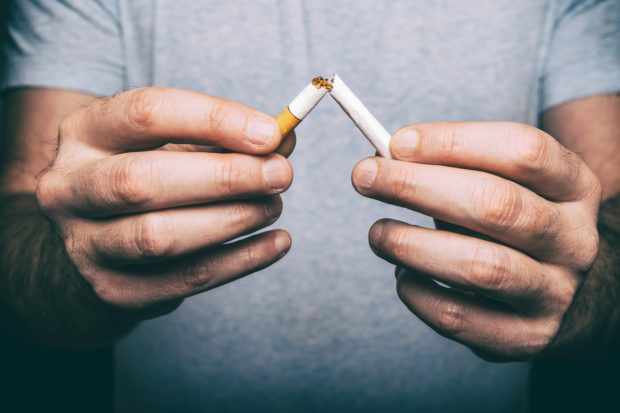
INQUIRER.net stock photo
The Department of Health (DOH) on Thursday reminded the country’s economic managers that promoting the Philippines to investors as a manufacturing hub for heated tobacco products (HTPs) runs counter to government policies that aim to protect the population from tobacco-related illnesses.
In a statement on Thursday, the DOH stressed that such a move “may result in the proliferation of these harmful products and worsening of the tobacco epidemic in the country” and “undermine efforts to prevent and restrict access to these products, especially among the youth.”
Economic burden
Promoting the country as a major producer of vapes and HTPs to investors could also ultimately result in a “long-term economic burden” in the form of serious health issues and deaths caused by smoking, the DOH noted.
These consequences outweigh any potential “economic gains” from investments in the local tobacco industry, it added.
The DOH issued the statement a day after Trade Undersecretary Ceferino Rodolfo was reported as saying that the Department of Trade and Industry (DTI) was looking to tap the country’s potential as a “prime investment location for manufacturing” in Asia, citing forecasts that the local demand for HTPS would grow “significantly.”
Zero-percent tariff duty
Some multinational firms are “actively exploring this opportunity in the Philippines,” Rodolfo said during the International Tobacco Agriculture Summit held on Wednesday.
One of them, he noted, was Philip Morris Fortune Tobacco Corp., an affiliate of tobacco giant Philip Morris International, which plans to put up a P9-billion production facility in Tanauan, Batangas province.
“HTPs, if manufactured in the (Philippines), can be imported in Asean (except Vietnam), Australia, New Zealand, Japan, Korea and Hong Kong at zero-percent tariff duty,” Rodolfo said. (Asean stands for the Association of Southeast Asian Nations.)
Harmful
Under Republic Act No. 11900, or the Vaporized Nicotine or Non-Nicotine Products Regulation Act, which lapsed into law on July 25 last year, the DTI oversees the registration of all tobacco products that enter the local market.
Data from the Philippine Statistics Authority showed that tobacco production in the country stood at 47,730 metric tons, with 66.8 percent of the national output coming from the Ilocos region.According to the US Centers for Disease Control and Prevention, using HTPs is harmful especially to children, teens and pregnant women as they “produce aerosols containing nicotine and toxic chemicals.”
Not to be confused with electronic cigarettes, HTPs warms the tobacco leaf “at lower temperatures than conventional cigarettes,” or lower than 350 degrees Celsius. It consists of an insert containing the processed tobacco and a heating device.
E-cigarettes, better known commercially as “vapes,” heat liquids that usually contain nicotine. Efforts to address the tobacco epidemic have gained traction since the Philippines adopted the World Health Organization’s Framework Convention on Tobacco Control in 2005.However, figures from the Foundation for a Smoke-Free World showed that there remained some 19.9 million smokers in the Philippines. Based on current estimates, more than 80,000 Filipinos die from tobacco-related disease each year.
Based on the Global Youth Tobacco Survey conducted by the DOH in 2019, 12.5 percent of students 13 to 15 years of age were found to be users of tobacco products, while 14.1 percent were users of e-cigarettes.